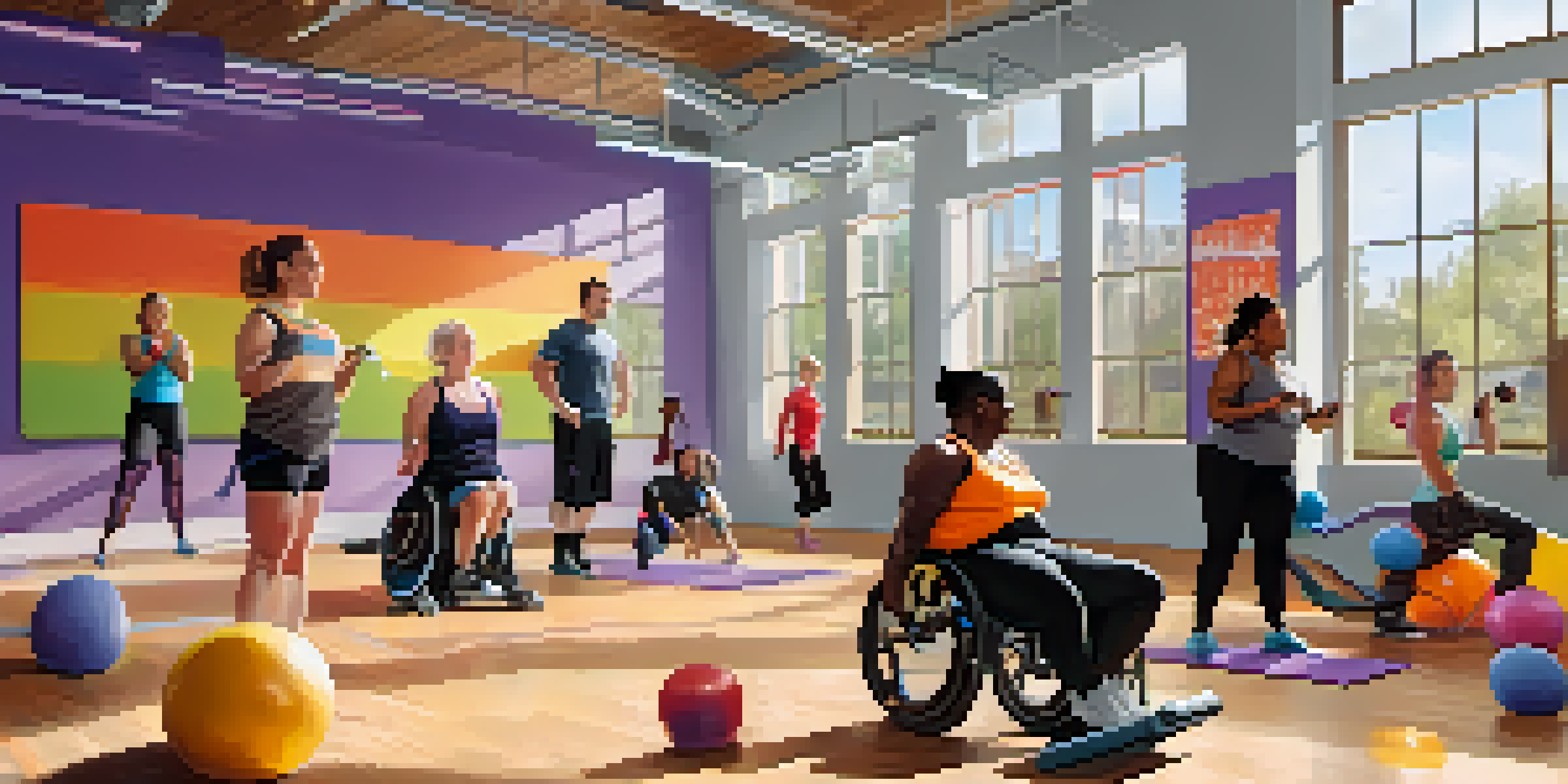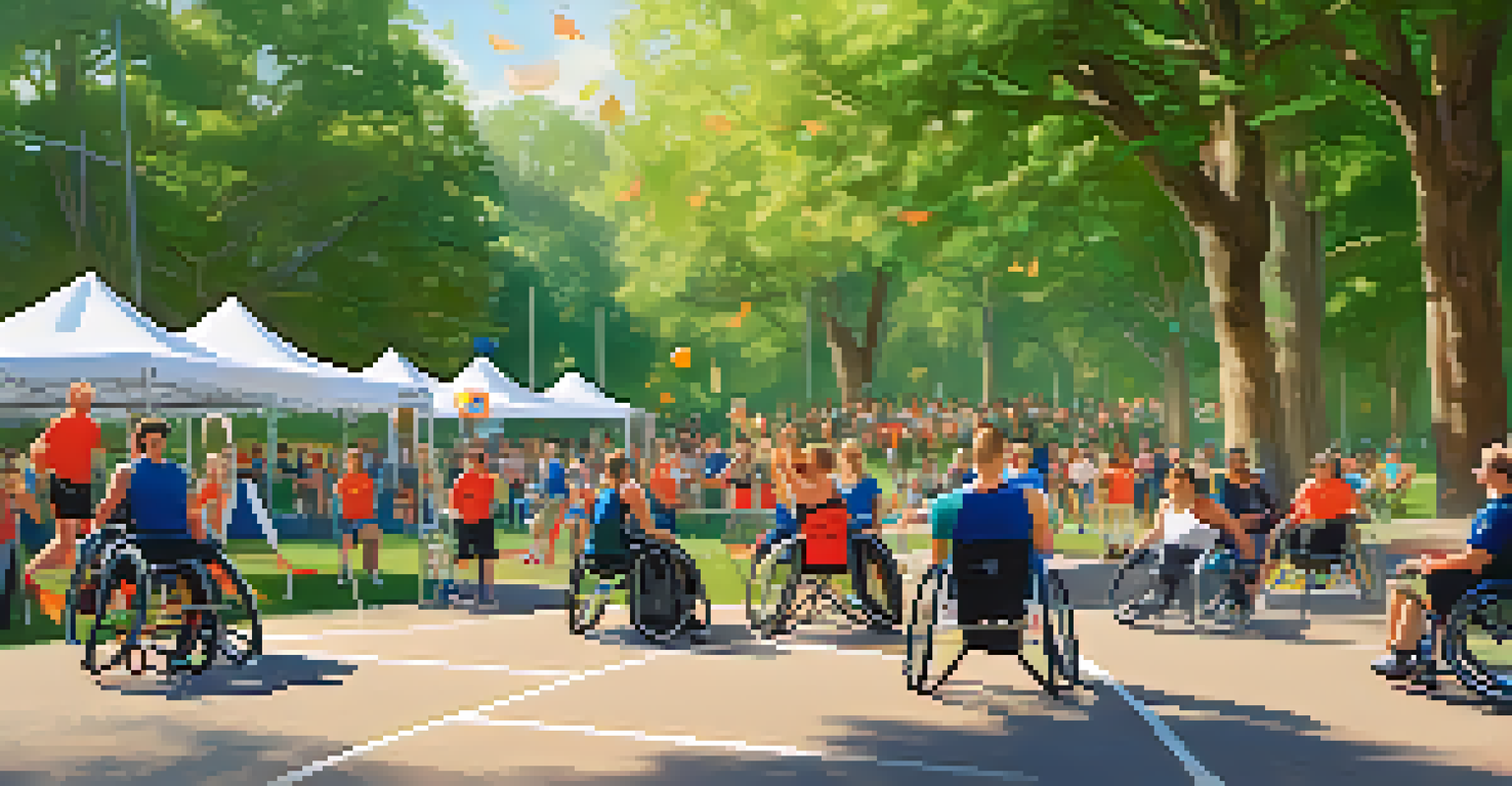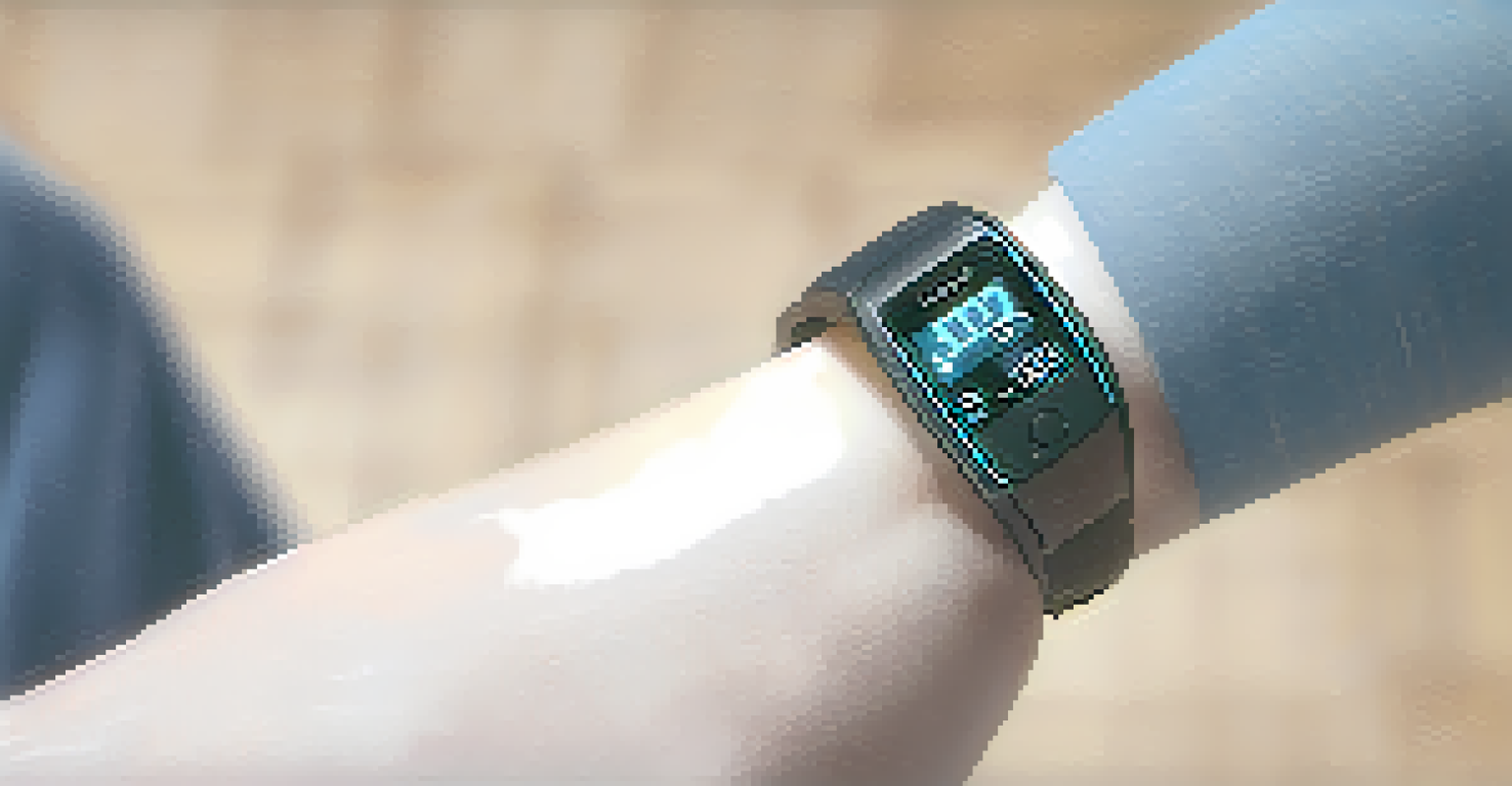Overcoming Barriers to Fitness for Individuals with Disabilities

Understanding the Unique Challenges Faced
Individuals with disabilities often encounter various barriers when it comes to fitness. These can range from physical limitations to social stigmas that discourage participation in fitness activities. Understanding these unique challenges is the first step towards creating a more inclusive environment for everyone.
The greatest glory in living lies not in never falling, but in rising every time we fall.
Many may feel intimidated by conventional gyms, which often lack accessible equipment or trained staff. This can lead to feelings of isolation and frustration, making it harder for them to engage in physical activity. By acknowledging these obstacles, we can work towards solutions that empower individuals with disabilities.
Additionally, societal attitudes can play a significant role in shaping the experiences of individuals with disabilities in fitness settings. Negative perceptions can deter them from pursuing their fitness goals, reinforcing the need for awareness and advocacy in the fitness community.
Creating Inclusive Fitness Environments
An inclusive fitness environment is essential for encouraging individuals with disabilities to participate. This can be achieved by ensuring that facilities are accessible, with ramps, elevators, and appropriate equipment available. Creating such spaces fosters a sense of belonging and encourages individuals to engage in physical activities without fear or hesitation.

Moreover, training staff to understand the specific needs of individuals with disabilities can make a significant difference. When fitness professionals are knowledgeable and empathetic, they can provide tailored support and guidance, making workouts more enjoyable and effective. This personalized approach can motivate individuals to stay committed to their fitness journeys.
Overcoming Fitness Barriers
Individuals with disabilities face various challenges in fitness, including physical limitations and societal stigma, which can hinder their participation.
Lastly, promoting a culture of inclusivity within fitness communities is vital. Celebrating diversity and encouraging participation from all individuals helps dismantle the barriers that prevent people with disabilities from engaging in fitness activities.
Adapting Workouts for Various Disabilities
Not all disabilities are the same, so it's crucial to adapt workouts to meet diverse needs. For instance, someone with limited mobility may benefit from seated exercises or resistance bands, while others might thrive in aquatic environments where they can move more freely. Tailoring workouts ensures that everyone can find an activity that suits them, promoting a sense of achievement.
Strength does not come from physical capacity. It comes from an indomitable will.
Using technology can also enhance the workout experience. Fitness apps and wearable devices offer personalized plans and track progress, making it easier for individuals to stay motivated and accountable. By integrating such tools, individuals can connect with their fitness goals in a way that feels rewarding and engaging.
Additionally, group classes designed for individuals with disabilities can provide camaraderie and support. Exercising alongside peers fosters a sense of community, encouraging participants to share their experiences and motivate one another. This social aspect can transform fitness from a solitary endeavor into a shared journey of growth.
Setting Realistic Fitness Goals
Setting realistic fitness goals is a fundamental step in overcoming barriers to fitness. Individuals with disabilities should focus on what they can achieve rather than limitations. This positive mindset encourages them to celebrate small victories, which can be incredibly motivating and help build confidence over time.
For example, someone may start with the goal of walking for five minutes a day and gradually increase the duration as their endurance improves. Breaking down goals into manageable steps can make the process feel less overwhelming and more achievable. This approach not only enhances physical fitness but also promotes mental resilience.
Creating Inclusive Environments
Designing accessible fitness spaces and training staff on disability needs fosters a welcoming atmosphere that encourages participation.
Moreover, having a support system in place can help individuals stay on track with their goals. Encouragement from friends, family, or fitness professionals can be invaluable in maintaining motivation. When individuals feel supported, they are more likely to persist in their fitness journeys despite challenges.
The Role of Adaptive Sports and Activities
Adaptive sports provide an exciting avenue for individuals with disabilities to engage in fitness while having fun. These sports are designed to be inclusive, offering modifications that make them accessible for everyone. From wheelchair basketball to adaptive yoga, there's something for everyone to enjoy, proving that fitness can be both enjoyable and beneficial.
Participating in adaptive sports also fosters a sense of community. Athletes often form strong bonds through shared experiences, creating a supportive environment that encourages personal growth. This sense of belonging can significantly enhance motivation and commitment to staying active.
Additionally, adaptive sports can help individuals build physical skills and confidence. As they improve, they may feel empowered to explore other fitness avenues, leading to a more active lifestyle. This ripple effect demonstrates the importance of offering diverse opportunities for individuals with disabilities.
Finding the Right Support System
A robust support system can significantly impact the fitness journey of individuals with disabilities. This can include family, friends, trainers, or support groups who understand their unique challenges. Having people to lean on can provide encouragement, accountability, and motivation, helping individuals stay committed to their fitness goals.
Moreover, connecting with organizations that specialize in disability fitness can offer valuable resources and guidance. These organizations often provide access to trained professionals, adaptive equipment, and community activities designed to promote inclusion. Engaging with these resources can empower individuals to make informed choices about their fitness journeys.
The Power of Support Systems
A strong support system, including family, friends, and specialized organizations, can significantly enhance motivation and commitment to fitness goals.
Lastly, sharing experiences with others facing similar challenges can be incredibly beneficial. Support groups or online communities can offer a safe space for individuals to exchange tips, celebrate achievements, and navigate obstacles together. This shared understanding can foster a sense of camaraderie and resilience.
Embracing a Positive Mindset Towards Fitness
A positive mindset is crucial in overcoming barriers to fitness for individuals with disabilities. Embracing self-acceptance and focusing on personal strengths can help shift the narrative from limitations to possibilities. When individuals view fitness as a journey rather than a destination, they are more likely to enjoy the process and remain engaged.
Practicing mindfulness and gratitude can also enhance this positive outlook. By acknowledging the progress made, no matter how small, individuals can cultivate a sense of accomplishment and motivation. This approach encourages them to keep pushing forward, even when faced with challenges.

Furthermore, celebrating diversity in fitness can inspire individuals to embrace their unique journeys. Recognizing that everyone's path is different fosters an environment where individuals feel valued and empowered. This sense of belonging can significantly enhance their overall fitness experience.